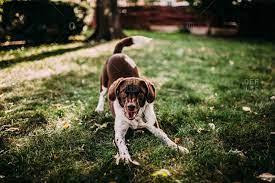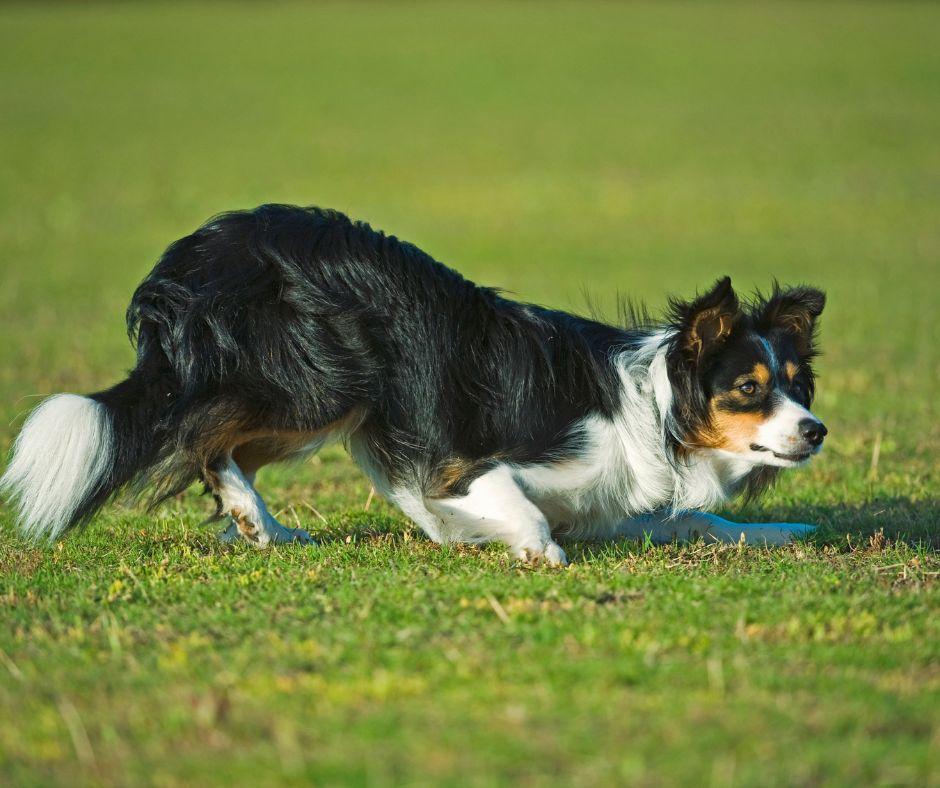Active Dogs- Lateral Strains
By Christopher Bates M.Ost (Registered Osteopath), LCAO Contributor
Whether they are rushing about chasing tennis balls or challenging you to a tugging match with a toy, dogs are a joy to watch. However, their playful movements make these exuberant animals far more prone to lateral (sideways) forces and injuries than any other domesticated animal.
While evidence to support the claim that dogs are more susceptible to lateral injuries is slim, the anatomical, behavioral, and biomechanical principles for this statement are sound. Let’s examine why.
The playful behavior that our domesticated dogs show stems from evolutionary traits that developed from being a predatory animal.
Imagine a wild predator chasing down a large mammal as its prey; the prey has often a size and speed advantage over the predator, but the predator has other tricks. Predatory animals are in an evolutionary arms race with their prey. They have to create traps, be faster, work as a team, and become more agile.
Canines evolved to work in teams (packs) in order to bring down larger and often faster prey. Instead of tiring their prey, they would play the long game. And while prey may be fast over short distances, the pack could take turns leading the chase over a longer stretch. As a result, the prey got tired.
Once the speed factor is cut out, there is one thing left to do- close in. At this point in the hunt, canines have a fantastic ability to alter direction quickly to shut off escape routes. We see it today in the herding work of sheep dogs- a skill that no technology can yet replicate. Let’s take a look at the science.
Biomechanics:

In the image, we have a determined Border Collie rounding up sheep. A very precise and fast change of direction is about to occur. The forces being transferred through the tissues here are very strong.
As a quadruped, abduction (limb moving away from the midline) of the shoulder is limited, around 30 degrees. This is the average angle the limb can reach before other mechanical changes occur such as trunk rotation or valgus (bowing) stresses on the distal joints.
To accommodate those forces, the tissues undergo micro and macro changes. Over time these changes can become more permanent and this is simply the adaptation of “fitness” for a task, the reason that appropriate training is so important for sporting dogs.
Unfortunately, there will often be times when the tissues are pushed just beyond their vital capacity and damage will occur. As stated above, other joints and body regions can flex, alter, and accommodate forces as well.

We have all seen this posture and to us, it looks playful and cute. But this position is a perfect example of the dog lowering its center of gravity in preparation to move in any direction quickly, just like its ancestors.
The body is lowered and inclined back to distribute weight evenly over the four feet building potential energy in the elastic muscles and taught tendons. Notice the front legs are splayed to the sides to accommodate lateral (sideways) shifts.
Muscles and tendons and joints….
So, what might we find as therapists, owners, and trainers? Those lateral forces will be sent through the complex structure which is the thoracic sling supporting the front limb.
Our courses teach the anatomy of this area in great detail and we use high-quality teaching materials to engage you in what can seem to be an overwhelming subject. But for now, let’s think simple.
The limb gets strained laterally then the muscles retaining the limb to the midline will get stretched. This could create the chance for minor tears or damage to the pectoral muscles.
Our courses teach in-depth palpation and Osteopathic assessment to allow you to ascertain if these muscles are damaged or experiencing pain (“Or” is important – Pain does not = damage, let us look at that in another article).
A joint that is built to have a greater range in flexion and extension than inside bending such as the carpal complex (essentially the wrist) could get over-exerted in that fast or excessive sideways darting movement.
The carpus is surrounded by a network of small fibrous ligaments that while elastic, have end ranges beyond which they can sprain or even snap.
Closing thoughts:
Should we stop doing agility classes with dogs? Should we stop our dogs from playing? Of course not!
The behaviors that dogs show in play and the skills they train in agility, working farm dogs, and other canine sports are natural and animals thrive mentally and physically when allowed to express their innate behaviors.
This article is not about suppressing those movements, it is to show how useful Osteopathy and therapeutic intervention can be for our four-legged friends. Educating ourselves in how to recognize injury, understanding the mechanics involved in canine movement, and knowing how to support good fitness is how to ensure dogs can live well.
Even if you don’t wish to become a professional Animal Osteopath (AO), we offer a range of short courses and diplomas that would be of great benefit to any dog trainer, breeder, or owner.

